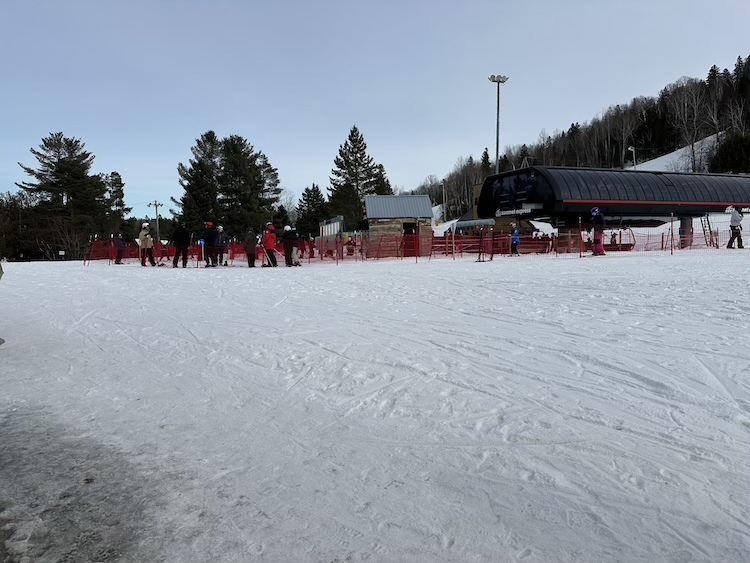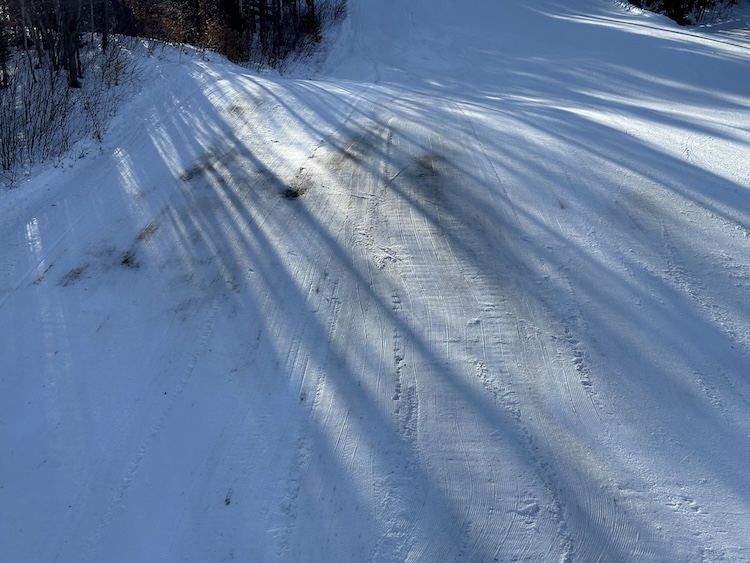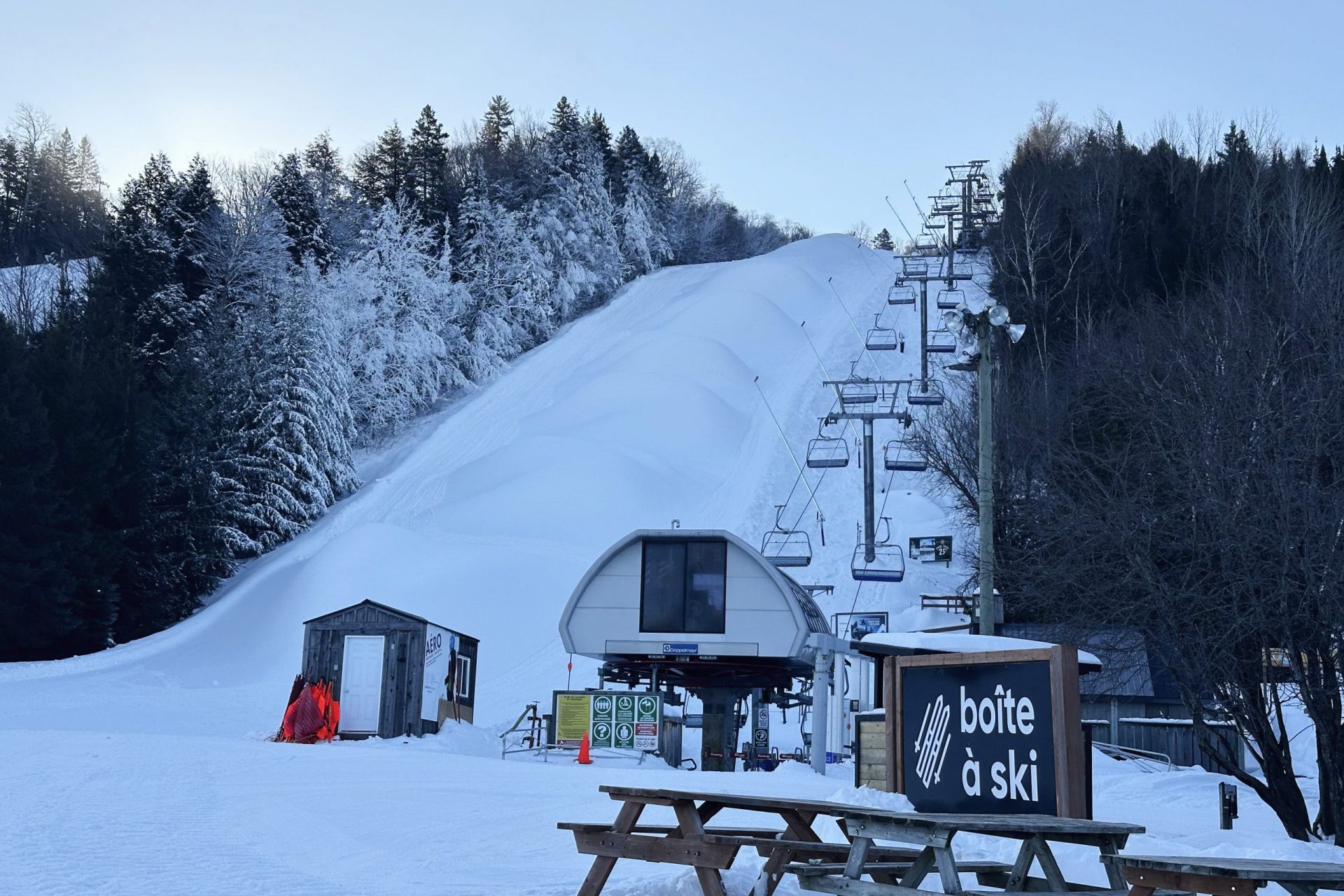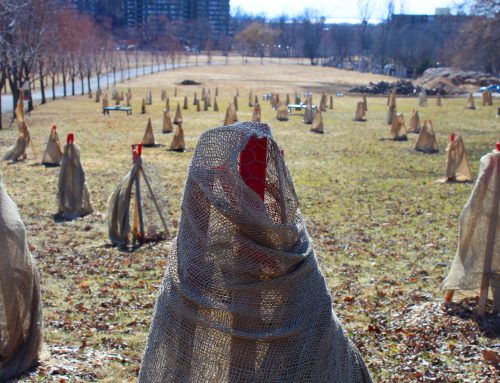BY Erika Tremblay & Tu Uyen Nguyen
“I couldn’t wait to ski,” says David Deschênes. “When snow comes in later, you are wanting it more.”
Deschênes had to delay the start of his 2023-24 season because the quality of the snow wasn’t up to standards until after the holidays.
With the rise of temperatures and the snow coming in later than usual, ski hills across the province had to adapt to warmer temperatures.
“This year we haven’t had very many cold days. We’ve had precipitation, of course, we’ve had some snow, but we’ve also had more rain than snow,” said David Phillips, climatologist for Environment Canada, “We really had some of the warmest conditions that we’ve had in Montreal.”
In December 2023, although there was no snow in Montreal, the snow in towns up north never melted. That allowed them to begin their season as usual.
“December was almost four and a half degrees warmer than normal, that is just uncalled for. January was almost five degrees warmer than normal.” said Phillips.
Winter only rolling in towards mid-January is starting to become a trend in Quebec.
During the 2022-2023 season, the ski industry was affected by the warm temperatures and lack of snow, which saw only about 12 per cent of normal traffic during the holiday period. That was even lower than the previous season, which was affected by the pandemic.
Usually, the holiday period is responsible for 15 to 20 per cent of traffic for the whole season.
“The most important period is currently the heart of the season which is January and February,” says Josée Cusson, director of communication and marketing at the Quebec Ski Hill Association (ASSQ).

Number of skiers throughout different parts of the season. Chart by Erika Tremblay.
Similar to the previous season, the snow came around mid-January 2024. That brought the skiers back to the mountains.
“We were able to open the slope as soon as usual,” says Guillaume Perreault, director of communications at Groupe Plein Air Terrebonne, “But it seems that in people’s psychology or in their way of thinking, if they are at home and there is no snow, they see the grass and the asphalt in their driveway. Unfortunately, it affected our sales. Around the middle of the holiday break, there was almost 25 per cent less sales than last year at the same date.”
What could be seen in many resorts across Quebec was a lot of snow in the middle of the slopes, and grass on the edge.
“Ski resort operators found that many winter sports enthusiasts opted to stay in town over the holidays due to the lack of snow in urban areas,” according to Sophie Leblanc-Leroux, Digital Communications Coordinator at the ASSQ.

Waiting lines are non-existent to get on the chairlift on the weekend at Sommet Saint-Sauveur. Photo by Erika Tremblay.
According to Environment Canada, December 2023 was one of the least snowy months in the history of Quebec. Although those who love to practise winter sports were disappointed, it had a lot of benefits for those living in Montreal.
Montreal witnesses declining snowfall and rising ice: What are its effects on the city? Video by Tu Uyen Nguyen.
Temperatures remained warm, breaking several heat records in January and February.
“It’s not the fact that I am disappointed that snow came later, but it’s the fact that my ski season is shortened,” says Deschênes. “Look at the latest temperatures, it feels like spring is coming in early this year.”

Patches of dirt have been seen on ski hills in February this year. Photo by Erika Tremblay.
Ski cannon technology has improved even as temperatures have warmed. That allows most hills to keep their slopes open.
And tourists have finally returned after the drought of the pandemic. Tourists made up 21 per cent of total sales of ski tickets across the province in 2022-23.




